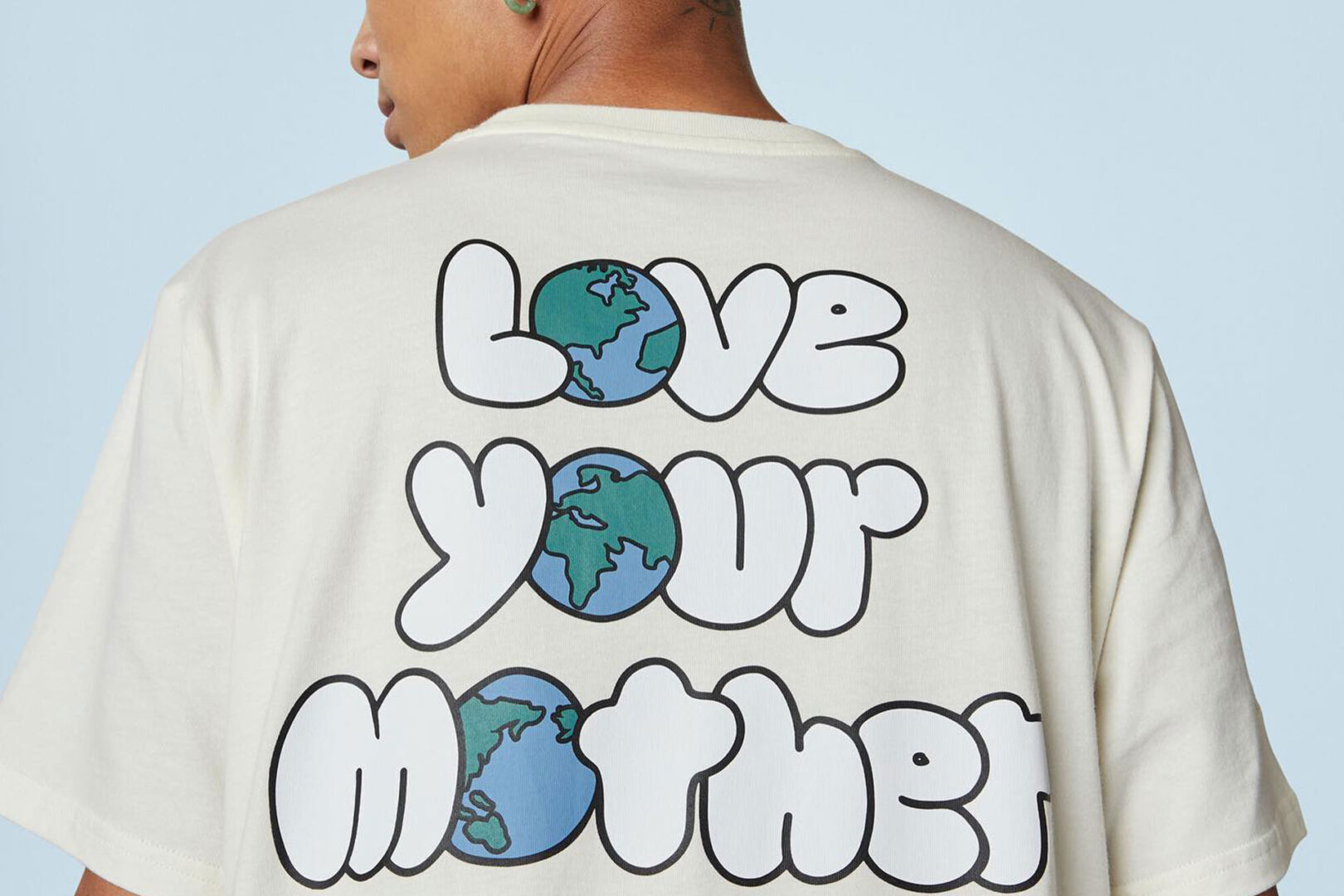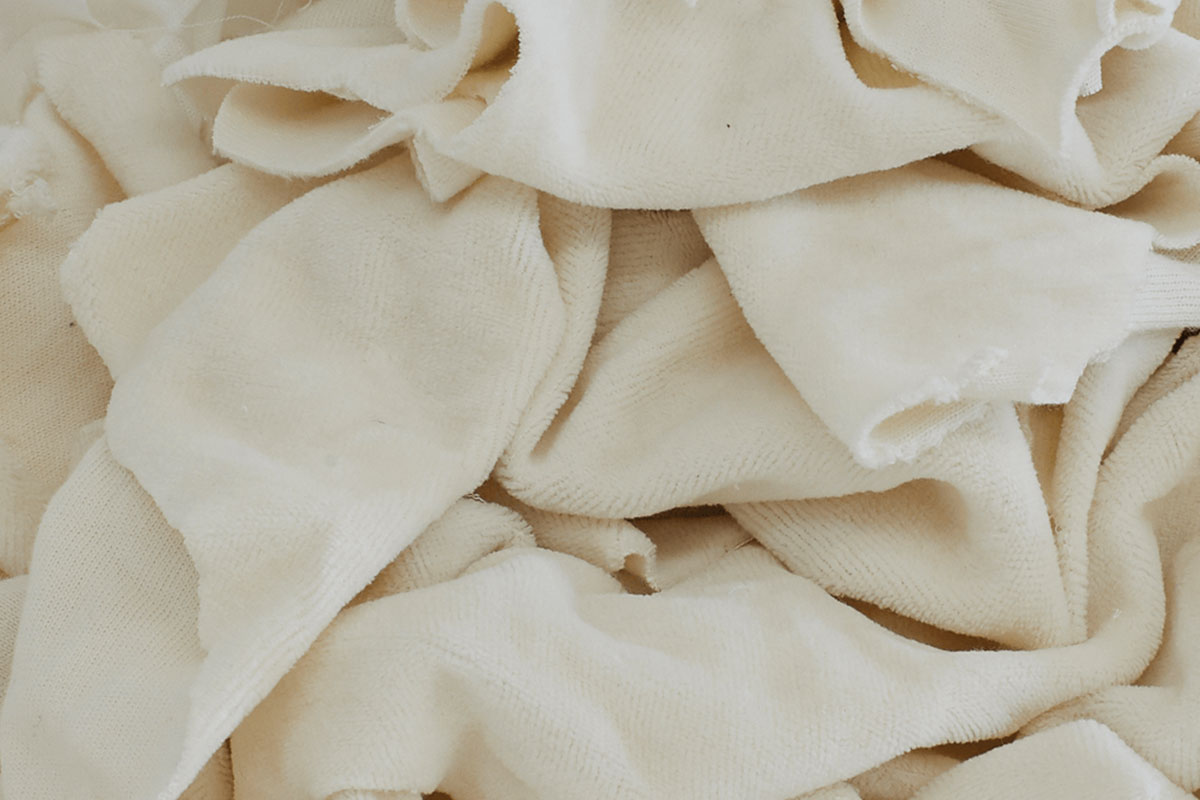The materials science company focuses on using waste streams as their main source of materials for production working on up-cycling the textile rather than down-cycling it
Circular systems designs
Being able to use up waste material rather than virgin fibers refers back to achieving a more sustainable future. Circularity is one concept which companies are trying to implement in their production. Circular Systems is a science material company that focuses on the development of regenerative and circular technologies. They work mostly with recycled cotton and agricultural crops. «It’s looking into what we would consider as waste», explains SVP Marketing, Andrew Schulenburg.
Reducing the dependency on virgin cotton – Texloop™
Circular Systems looks at two waste streams: that of textile and of medicine/agriculture. Their core product – recycled cotton fiber – comes from textile waste. They use mechanical processing, something which isn’t relatively new. Schulenburg explains that the innovation behind it is what makes them different: «How to maximize the value of that at mass scale is where our innovation comes into play». The system design is a big part of just how large scale such methodology can become. They mainly focus on pre-consumer waste. This includes waste coming from textile mills and off-cuts in other facilities. One of the biggest reasons for this is that post-consumer waste isn’t completely pure.
«From the consumer side, when you think of textile waste you think of all the clothes you have in your closet which you can get rid of. There is no real scale solution to that in terms of recycling that back into new products», says Schulenburg. That is because of all the various compositions and blends, usually included in the textiles. Thus, the final product won’t be of high value. «There are some ideas and methodology on how to handle that stuff but it just isn’t at a scaled level. There is still tons of waste at the manufacturing side so we’ve focused on that with the means of starting there». One of the goals is to reduce the dependency which people have on virgin cotton. The final recycled fiber has spinning capabilities, making it a popular product among other companies.
Using up the last of what crops have to offer – Agraloop™
The second waste stream which they are focusing on is outside of the realm of fashion. Although we may deem waste from the agricultural industry as ‘natural’, it can still have an impact on the environment. They focus on crops grown for the medicinal and food industry. They harvest the residue of the plant after the processing and development of the primary value of that crop into the marketplace. There is a natural fiber in another part of the plant. Usually thrown away, burned or left to rot. «In both of those inactions, it causes a lot of CO2 to go into the atmosphere», Schulenburg explains.
Their aim is to promote farming around crops that can be multipurpose. This brings value to the rest of the crop residue after the manufacturing of food and medicine. On top of that, it brings income opportunities for farmers and the community in general. «We take that residue and process it into a textile grade fiber», says Schulenburg. Hemp is one of the crops which they are looking into. Again, innovation is where they focus on the most. By doing this, they can elevate the quality of the residue of the plant.
Refining fibers in such a way enables a lower impact solution to the textile industry. The natural fiber can go into product applications like denim and heavier woven fabrics. «The goal is to focus on circularity and regenerative solutions. The regenerative aspect comes from the food crop residue processing and scale strategy in terms of the farming», Schulenburg explains. Crops have a lot of regenerative properties regarding what they bring back to the soil. «They can be recycled and if they end up in a landfill, they will biodegrade because their base is a natural fiber», he says.
Making textile grade fiber out of waste
Their aim is to apply innovation around processing to be able to reuse waste streams into new products at equal or greater value. Recycling fibers usually gets misconstrued as a closed loop concept. Most of the time, the fiber gets down-cycled. This entails creating lower value products because of the lack of system design around it. When a fiber gets down-cycled, it is usually because the length of the fiber continuously decreases. To up-cycle a fiber, the properties need to remain intact without affecting the quality of the final product. «Our goal is to look at that low value input, apply our innovation to it and create a higher value product, specifically textile grade fiber for the fashion industry», Schulenburg explains.
Circular Systems – ‘Lightest-touch’ processing
Regarding the manufacturing process, many companies do it chemically. However, Schulenburg explains that once the treatment is done, it’s no longer cotton. «It turns into a viscose product. This is because you’re melting down the natural cellulosic chain», he says. «We want to keep that neutral cellulosic chain intact to keep it more of its natural fiber». Their process is around system design and optimizing the calibration of the machinery. This allows them to perform mechanical processing on the cotton fiber whilst keeping it as a natural fiber. Innovation isn’t about creating completely new machinery or technology.
Their ‘lightest-touch’ processing helps maximize the energy within the recycled material. This ensures that they are working on up-cycling the textile rather than down-cycling it. In their agricultural fibers, they use mechanical processes as well. Refining the fibers doesn’t use harmful chemistry or water, a new concept for bast fibers. Schulenburg explains that this way of doing can showcase what a closed loop economy really looks like. «To take the bio-products from the processing that can create the bio energy to run the mill. Then using the same chemistry and affluents from the processing which can go back into the soil. That is where you can fully get into the concept of the closed-loop process».
The decrease in percentage of water to use
For Schulenburg, working together with fashion brands is key to achieving a more sustainable future. The challenge lies within scaling up innovative technologies enough to make an impact. Although there is a lot still a lot to do, the act of starting small is important. «We set goals and have milestones but we can’t let the perfect be the enemy of the good. We implement things and then raise the bar to act fast». For example, the majority of their cotton t-shirts are made from recycled cotton. In theory, this reduces water consumption by up to fifty percent then if it were made from virgin cotton. This already has a big impact. Schulenburg explains that commodities such as water are becoming scarce, increasing the final price of products such as cotton. «These prices are going to continue to go up as these resources become more scarce». he adds.
Institutional change and collaborations within the industry
Government regulations need to be more specific to this aspect of the supply chain in the fashion industry. Not only would this encourage large companies to change their ways, it would ensure that things are being taken seriously. «Certification bodies need to get aligned. This type of thing gets into a blockchain. Some of this tech needs to get into a fashion supply chain sooner rather than later», he explains.
Circular Systems
Material science company focused on regenerative technologies. They turn waste streams into new fiber for the fashion industry. Their waste to textile fiber platforms include Texloop™, Agraloop™ and Orbital™. They focus mainly on recycling cotton fibers and agricultural crops.




















